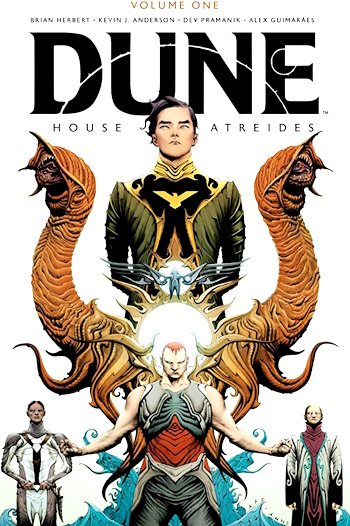1969—Yasser Arafat, a Fatah leader, is elected head of the PLO.
1970—By this year, there are more Palestinians living in the unified territories of the West Bank and Jordan than Jordanians. The PLO attempts to assert political power in Jordan. The tension between the PLO and Jordanian authorities leads to a civil war known as Black September and the PLO’s expulsion from Jordan. The PLO then makes its base in Lebanon.
1973—The Israeli government builds settlements in the West Bank, the Golan Heights, and northern Sinai, suggesting an eventual turn from temporary military occupation to a permanent Israeli civilian presence. On the Jewish holiday of Yom Kippur, Egyptian and Syrian forces attack Israeli forces in the Golan Heights and the Sinai Peninsula. On October 22, a cease-fire agreement officially ends attacks on both sides, but some attacks continue as Egypt attempts to gain territory in the Sinai. In postwar negotiations brokered by the U.S. early the next year, Syria regains much of the Golan Heights, and Egypt and Israel agree to new borders on either side of the Suez Canal. Israel continues to occupy a portion of the Golan Heights despite international legal restrictions on the occupation.
1974—November: Arafat speaks before the United Nations and asks for international recognition of Palestine as the home of an independent people. In response, the UN grants the PLO “observer status.” The designation allows limited participation in the UN General Assembly by certain non-state organizations.
1975—Civil war begins in Lebanon. The PLO is a major force in the war as it seeks to protect Palestinian refugees and assert its control over the country’s south. The war continues for fifteen years.
1978—September: U.S. President Jimmy Carter meets in secret with Israeli Prime Minister Menachem Begin and Egyptian President Anwar Al-Sadat at Camp David, resulting in the Camp David Accords. These agreements set the principles for an Egypt–Israeli peace treaty that ends three decades of hostilities between the two countries. Israeli soldiers are removed from the Sinai Peninsula, and the region is reclaimed by Egypt.
1980—Israel passes a law declaring the city of Jerusalem “complete and united, is the capital of Israel.”
1981—Israel votes to annex the Golan Heights, which it had captured from Syria in the Six-Day War.
1982—June: Israel invades Lebanon, where the PLO is based. Defense minister Ariel Sharon’s raids exceed the limits of the state-approved defense plan, taking Israeli forces into the capital Beirut and incurring thousands of civilian casualties, especially in the Palestinian and Shiite neighborhoods of Sabra and Shatilla. By the end of the summer, a multinational peacekeeping force arrives to protect Palestinian civilians and oversee the departure of the PLO. The PLO is expelled from Lebanon and settles in Tunisia. Israeli forces remain in south Lebanon through 2000.
1987—December: An Israeli tank-support truck crashes into civilian cars in Gaza, killing four Palestinians. Shortly after, Palestinian frustrations erupt into demonstrations in Gaza and the West Bank. Known as the Intifada or “casting off,” this uprising begins without direction from the PLO or any other external organization, though the PLO soon becomes heavily involved. By January 1988, Intifada leaders adopt proposals calling for the creation of a PLO-led Palestinian state that would coexist with Israel. Over the next few years, the center of Palestinian politics shifts from exiled Palestinian populations in neighboring Arab states to the occupied territories.
—Israel responds to the uprising with violence targeting demonstrators and Arab prisoners, and begins large-scale arrests of protesters; during this period its per capita prison population climbs to the highest in the world. In the first five weeks of the Intifada, almost 200,000 Palestinians are imprisoned, more than 250,000 are wounded, and 33 are killed; Israel’s response receives criticism from the international community and creates solidarity across Palestinian factions.
—As Intifada violence escalates, Palestinian members of the Muslim Brotherhood movement form Hamas, an armed group calling for a theocratic Palestinian state. With PLO corruption scandals on the rise, the appeal of Hamas and other Islamic groups grows.
1988—Palestinian leaders release the Palestinian Declaration of Independence on November 15.
1991—October–December: Leaders from Israel and Arab representatives from Lebanon, Syria, and a combined Jordan-Palestine delegation convene in Madrid for peace and land negotiations, at a conference sponsored by the U.S. and the USSR. The conference is the first attempt at direct peace talks between delegates from Israel, the Arab states, and the Palestinians.
1992—October: Jordan and Israel announce that they have drafted a peace treaty, to be ratified if a larger, comprehensive regional peace treaty is established.
1993—After months of talks in secret, Israel and the PLO sign the Oslo Peace Accords. For the first time, the PLO formally recognizes Israel’s existence as a state, and Israel formally recognizes the Palestinian people and the PLO. The agreement establishes the Palestinian Authority, which will govern Palestinians in Gaza and the West Bank on an interim basis. Israel also promises to freeze settlement construction in the occupied territories. While there is some disagreement among historians about where to mark the end of the First Intifada, most place it at either the Oslo Accords or the 1991 Madrid conference.
1995—September: Israeli Prime Minister Yitzhak Rabin and Palestinian Authority Chairman Yasser Arafat sign another peace accord, known as Oslo II, that solidifies some of the principles set out in the 1993 Oslo Accords. Oslo II sets deadlines for Palestinian elections, negotiations on permanent status, and land concessions from Israel.
—November: Amid unrest from the ultra-Orthodox and extremist Israeli settlers in reaction to Oslo II’s proposed land concessions, Israeli Prime Minister Yitzhak Rabin is assassinated by Israeli citizen Yigal Amir. The assassination and its fallout disrupt the peace process severely.
1996—Israel’s next elected prime minister, Benjamin Netanyahu, lifts a four-year freeze on settlement expansion in the territories without consulting Yasser Arafat. Settlements expand rapidly. Over the next decade, the population of settlers in the West Bank alone doubles from roughly 125,000 to 250,000.
1999—May: The deadline passes for the end of negotiations on Palestine’s permanent status, as set by the Oslo agreements.
2000—July: U.S. President Bill Clinton hosts Israeli Prime Minister Ehud Barak and Palestinian President Yasser Arafat for negotiations at Camp David, though no agreement is reached.
—September: Ariel Sharon, an Israeli opposition leader and former military commander, visits an East Jerusalem site holy to both Judaism and Islam known as the Temple Mount, or the Al-Aqsa Mosque. While visiting, Sharon publicly declares that the holy site will remain forever under Israeli control.
—The Second Intifada begins, guided by popular disappointment with the Oslo Accords. Palestinian protests begin in Jerusalem and spread throughout the West Bank and the Gaza Strip. Compared to the First Intifada, the Second Intifada is marked by increased violence: greater incidence of shootings, suicide bombings by Arab militias, and targeted assassinations of Palestinian political leaders by the Israeli Defense Forces.
2002—Israeli military forces invade and occupy parts of the West Bank in Operation Defensive Shield, their largest ground assault into Palestinian territory since 1967. Israel begins construction of a barrier separating the West Bank and Israel, which divides communities, blocks travel routes, and remakes the geography of the West Bank. Nearly 85 percent of the proposed barrier between Israel and the West Bank cuts through territory delineated as Palestinian by the 1949 Armistice “Green Line.”
2004—April: Israeli prime minister Ariel Sharon announces a unilateral “Disengagement Plan,” calling for the removal of all Jewish settlers from the Gaza Strip and parts of the West Bank. Intifada violence dwindles. Plans accelerate for a barrier wall that will seal off most of the West Bank and Gaza from Israel. Yasser Arafat falls ill and dies in November.
2005—After the death of Yasser Arafat, Mahmoud Abbas is elected president of the Palestinian Authority. Abbas works with international organizations for transparency and the de-militarization of resistance groups.
—August: Israel’s Unilateral Disengagement Plan of Gaza begins, and thousands of settlers in the region are relocated by the following September. While the Palestinian Authority governs within Gaza, Israel stays in control of Gaza’s borders.
2006—January: Hamas wins a surprise majority in elections for the Palestinian Authority’s legislature. In response, international donors including the U.S. and the European Union suspend aid to Gaza. Israel also begins withholding the taxes it collects for the Palestinian Authority.
—Soon after the election, Hamas and rival Fatah clash. In June, Hamas captures Israeli soldier Gilad Shalit from a Gaza border post. His safe return becomes a focus for Israel’s politicians and citizens.
2007—July: Hamas drives Fatah out of Gaza following a spate of armed confrontations. Hamas effectively severs its relationship with the Palestinian Authority.
—Following Hamas’s takeover of Gaza, Israel imposes a comprehensive blockade on the Gaza Strip. With support from Egypt, Israel restricts the movement of people, goods, electricity, fuel, and water into and out of Gaza. By mid-2008, imports to Gaza are reduced to 30 percent of their pre-blockade levels.
2008–2009—Israel launches Operation Cast Lead, a campaign into Gaza with the stated aim of destroying Hamas’s rocket capabilities. Casualties are widespread, including the deaths of 1,200 to 1,400 Gazans. Israel also damages much of Gaza’s internal economic infrastructure, leaving it reliant on outside aid that has been restricted by the blockade.
2009—October: Israel releases twenty female prisoners in exchange for a video proving that Gilad Shalit is still alive.
2010—April: Palestinian President Mahmoud Abbas signs a decree promoting a boycott of products made in the Israeli settlements. The decree stipulates punishments for Palestinians who sell settlement goods.
—June: Israel eases import restrictions of the Gaza blockade after a failed raid on a flotilla of six ships bringing aid to Gaza. During Israel’s raid nine Turkish activists on the ships are killed and dozens injured, causing an international outcry.
2011—After five years, Hamas releases Gilad Shalit, in exchange for the release of more than 1,000 Palestinian prisoners held by Israel. Rocket attacks and armed conflict between Israel and Hamas continue, as does the Gaza blockade.
2012—November: The UN General Assembly overwhelmingly approves Palestine as a non-member observer state, the same status held by the Vatican. The same year, Israel launches Operation Pillar of Defense, an eight day assault that leaves as many as 167 Gazans dead. Six Israelis, including four civilians, are killed by rockets fired from Gaza.
2013—U.S. Secretary of State John Kerry announces renewed Israel–Palestine peace talks. Plans to construct housing for settlers in areas of the West Bank and East Jerusalem under Israeli control increase.
2014—In response to increased settlement construction, the Palestinian Authority unilaterally applies for membership in fifteen international organizations and treaties. Peace talks initiated by John Kerry are called off.
—April: Political parties Hamas and Fatah announce a reconciliation and begin to negotiate a reunion between Hamas and the Palestinian Authority. The reconciliation plan includes new elections scheduled for the end of 2014.

























